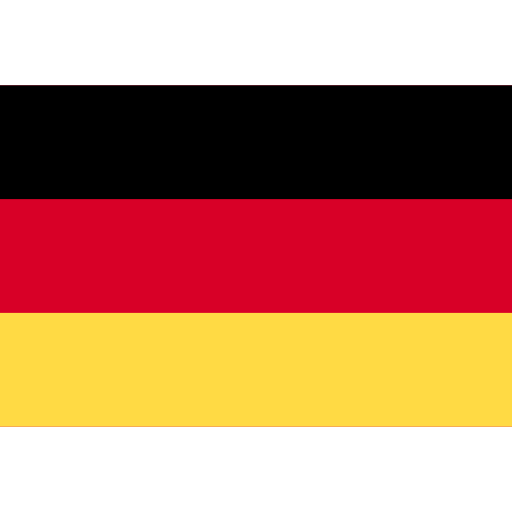Google Android 13
[ad_1]
After several months of beta testing, Google Android 13 is publicly available to Pixel phone users. The operating system arrives earlier in 2022 than the typical Android fall release, and is an iterative update that builds upon the foundation laid down with Android 12. This includes a much more elaborate and customizable Material You, convenient multitasking tools, cross-compatibility with Chromebook and Google tablets, per-app language personalization, photo-picking improvements, and expanded privacy and security features. Android 13 isn’t a groundbreaking OS like Android 12, but adding more polish to last year’s excellent feature set isn’t a bad thing.
How to Get Android 13
At the time of this writing, Android 13 is available only to a limited number of phones: specifically Google’s Pixel line. A Google blog post explains that the update is slated for other Android devices, such as Samsung Galaxy, Asus, Nokia phones, iQOO, Motorola, OnePlus, Realme, Sharp, Sony, vivo, Xiaomi and more, at some point later in 2022. If you have a Pixel phone, check to see if it’s eligible for the Android 13 update by heading into Settings > System > System Update. If you see Android 13 as a new version, you’re all set to download and install the OS.
The process is relatively quick and painless, provided your phone is up to date with the latest software. Downloading and installing Android 13 took between 5 and 10 minutes on a test Pixel 4XL, and after a quick restart, the phone was ready for use.

Customization and Accessibility
Material You redefined personalization for Android users last year. This feature lets you customize the user interface (UI) to match your wallpaper; it adopts a color scheme to match the background. Android 13 offers a greater selection of colors, giving you more control over the look of the home and lock screens. This feature was expanded to include the color scheme of non-Google apps, which is a nice touch. Unfortunately, developers must opt in to allow this function, so in practice many of the apps we commonly use on our phones have not adopted this feature. LinkedIn pulls from your color selection, for example, but Facebook, Messenger, and Twitter do not. It clashes with Google’s envisioned, cohesive look.
Multilingual Android users can set their preferred language for individual apps. This showed great promise during the beta, but unfortunately falls a little flat in the official Android 13 release. Only apps that support language selection can be customized in this way, and from our testing, this is quite limited. Of course, Google’s own apps, such as Calendar, Maps, and News, use this feature, so there is still some utility for it despite its limited applications. For example, my father uses English for most of his phone functions, but needs his driving directions in Spanish. Having Google’s excellent Map app work in Spanish is a game changer for him.
Android 13 bundles in support for braille displays by default, which is a very nice touch. This feature is meant for visually impaired people who cannot interact with or read a touch screen. Previously, the visually impaired had to download and use the BrailleBack app to get the most from their phones. With Android 13, this can be used as soon as the update is installed.

Permissions, Privacy, and Security
This update also brings with it several new permission and privacy improvements that make the OS much less intrusive and vastly more comfortable to use. With Android 13, apps ask for permission before they can send you notifications. You no longer need to worry about a cacophony of notices whenever you open up your device; these notifications can be shut off right when you install the app (or later in the Privacy menu in Settings).
Another notable privacy enhancement comes in the form of the photo picker. Similar to the functionality seen in iOS, you now have the ability to select what specific images apps can access whenever you’re sharing something, rather than giving these apps permission to peek at your entire library.
There’s one particularly important thing to note in regards to security: Pixel 6, Pixel 6 Pro, and Pixel 6a cannot be reverted to the older Android 12 once they are updated to Android 13. Google has not specified why this is, though it seems like a potential security issue with the Pixel 6 line. In any case, it’s a one-way-street, so only download and install Android 13 if you’re absolutely certain you want it.
Multitasking Bonanza
Google expands device functionality and cross-communication with each OS release, as the Android architecture is supported by many smart devices. Your Android phone can easily serve as your smart device control center. With Android 13, Google enriches multitasking functionality, which is particularly useful with so many of us returning to work, or working from home. If you’re a Chromebook owner, you can stream messages from your phone directly onto your Chromebook. You can send and receive messages without having to reach for your phone, as long as these devices are connected via Bluetooth.
Another useful feature is the cross-device, copy-and-paste functionality. We’ve all been in situations where we want to quickly share content between our devices, be it a text, screenshot, photo, or URL, without having to go through the trouble of juggling multiple apps to save and send it. With Android 13, you can simply tap and hold what you want to share, search for nearby Android devices, and simply paste it to your other device.
Tablet owners benefit from improved productivity with the ability to open a second app from the taskbar and enjoy a split-screen view, making multitasking much easier. This feature may not be quite as robust as the iPadOS 16’s impressive Stage Manager, which lets you juggle four apps at a time. We’ve come a long way from a single app hogging a tablet’s screen space.

Some Cool Features in No Particular Order
- Android 13 finally supports exFAT files, letting Pixel devices handle files larger than 4GB (a former storage limitation due to the use of the dated FAT32 format in earlier devices). With 4K video and HD photographs now commonplace, this is a major improvement.
- You now have a quick setting for the QR code scanner. It is accessed via the notification shade (you pull it down from the top of the screen). A new Scan QR code option can be assigned to the notification shade, making it more convenient than navigating through Google Lens.
- You can summon the Assistant by swiping up from the bottom corners of your screen.
Polished to a Shine
Android 12 was a significant update for smartphones when it dropped last year, so it’s no real surprise that Google is expanding Android’s elements rather than aiming for another major overhaul in 2022. Android 13 feels like a collection of refinements, but this is not a detriment to the OS. The new customization functions are engrossing. The security and privacy changes are long overdue, and a welcome improvement. The multitasking additions are a great boon to productivity, and we hope to see more of them going forward. Android 13 offers a tidy OS package that enhances your Pixel device without overwhelming you with new features and functions, but that’s all it really needed to be.
[ad_2]
Read More:Google Android 13

 Canada
Canada Japan
Japan Germany
Germany Australia
Australia United States
United States United Kingdom
United Kingdom China
China France
France Ukraine
Ukraine Russia
Russia Turkey
Turkey